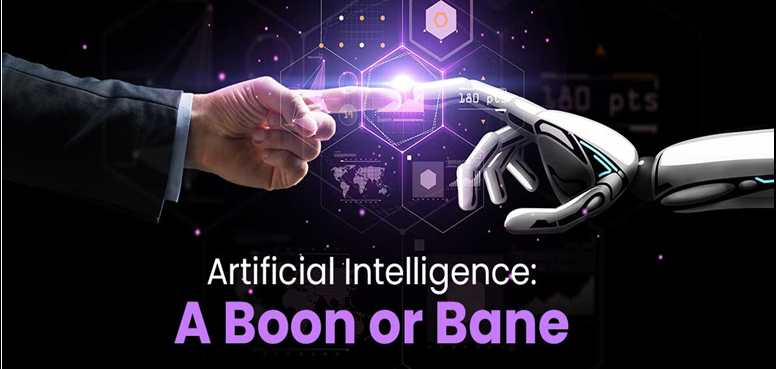
AI's Ecological Paradox!
Impacts on Biodiversity, Opportunities in Climate Action

Introduction
Artificial Intelligence (AI) refers to the capability of machines and computer systems to perform tasks that typically require human intelligence, including learning, reasoning, problem-solving, language understanding, and decision-making. AI technologies enable computers to simulate human cognitive functions and adapt their behavior based on data and experiences.
In recent times, the remarkable capabilities of ChatGPT have captured the public's imagination, sparking conversations about AI's potential impact on various aspects of our lives. From engaging in human-like conversations to coding and crafting poetry, AI's prowess seems boundless. However, as investments in artificial intelligence (AI) surge, there arises a legitimate concern about its implications for the environment.
The Positive Side
AI's Role in Addressing Environmental Challenges: Opportunities
Artificial Intelligence (AI) holds the potential to expedite global initiatives for environmental preservation and resource conservation. It can identify energy emission reductions, aid in CO2 removal, facilitate the development of eco-friendly transportation networks, monitor deforestation, and forecast extreme weather conditions. Here are examples illustrating how AI offers solutions to some of the most critical environmental concerns:
- Climate Change Mitigation
- Machine learning optimizes real-time energy generation and demand.
- Enhanced grid systems with improved predictability and efficiency, employing renewable energy sources.
- Smart sensors and meters in buildings gather data to analyze and optimize energy usage.
- Biodiversity Conservation
- AI combined with satellite imagery detects changes in land use, vegetation, and natural disaster impacts.
- Detection and tracking of invasive species using machine learning and computer vision.
- Predictive software assists anti-poaching units in planning patrol routes.
- Ocean Health Protection
- AI gathers data from remote ocean locations to safeguard species and habitats.
- Tracking and prevention of illegal fishing activities using AI.
- AI-powered robots monitor ocean conditions and pollution levels.
- Water Management
- AI assists water scientists in projecting water usage and making informed policy decisions.
- AI, along with satellite data, forecasts weather and predicts drought conditions.
- Air Quality Enhancement
- AI-enabled air purifiers adjust filtration efficiency based on real-time air quality data.
- AI-powered simulations warn urban residents about pollution levels and sources.
- AI uses vehicle, sensor, and camera data to improve air pollution assessment.
- Weather Forecasting and Disaster Resilience
- AI-driven predictive analytics, along with drones and sensors, monitor natural hazards.
- Real-time information aids in timely government actions and early evacuations.
- AI combined with physics-based modeling assesses the impact of extreme weather on infrastructure.
Incorporating AI into environmental strategies offers immense potential to create a more sustainable future. It equips us with innovative tools to combat climate change, preserve biodiversity, and enhance disaster preparedness.
The Negative Side
AI's Pervasive Presence and Growing Concerns
The global AI market currently stands at an impressive $142.3 billion and is projected to skyrocket to nearly $2 trillion by 2030. AI systems have become integral to various aspects of our lives, transforming industries, enhancing governance, and propelling innovation. Nevertheless, as AI's footprint expands, so do concerns about its environmental impact. Here are some major concerns which highlight Ai’s adverse impact on the environment:
- Carbon Footprint Conundrum
One of the most glaring concerns surrounding AI is its substantial carbon footprint. To illustrate, consider the process of training an AI model to identify a seemingly simple object like a car in an image. This task involves analyzing millions of images, requiring significant energy consumption. This computation-intensive process takes place in energy-hungry data centers, contributing significantly to carbon emissions. Notably, a 2019 study estimated that training a single large AI model could emit around 284,000 kilograms of CO2 equivalent, almost five times the emissions produced by a car over its entire lifespan, including its manufacturing.
- Emissions & Water Scarcity
AI's environmental toll extends beyond emissions. The operation of data centers and data submission networks collectively contributes 2-4% of global CO2 emissions, a figure comparable to emissions from the aviation industry. The heavy energy requirement for AI training exacerbates the emissions concern. Furthermore, AI facilities generate substantial heat, necessitating intensive cooling measures. This can lead to water scarcity issues, as seen in the case of Google's data center in Chile, which inadvertently worsened a local drought, causing community backlash.
- Consumerism & Industry Impact
AI-driven advertising plays a significant role in shaping consumer behavior. Algorithms designed to stimulate consumption inadvertently contribute to increased environmental degradation. Additionally, industries harnessing AI to streamline processes, cut costs, and bolster production may inadvertently worsen environmental issues. For instance, the oil and gas sector's utilization of AI to optimize operations undermines global climate commitments, posing challenges to the transition to renewable energy sources.
Solutions for a Greener AI Future
Addressing AI's environmental impact requires a multifaceted approach:
- Optimizing AI Models: Prioritize the development of efficient and smaller AI models that achieve tasks while consuming fewer resources.
- Sustainable Data Centers: Choose data center locations strategically, favoring regions abundant in renewable energy sources and requiring minimal water for cooling. Iceland's data centers powered by geothermal energy exemplify this approach.
- Strategic AI Implementation: Direct AI's capabilities towards applications that accelerate climate change mitigation. AI can optimize energy consumption, predict climate patterns, and advance sustainability practices.
- Tech Giants' Responsibility: Leading technology companies are adopting environmentally conscious measures. Google's commitment to carbon neutrality and Microsoft's ambition to be carbon negative by 2030 set commendable examples.
The Path Forward
As AI's influence grows, a delicate balance between innovation and environmental responsibility must be struck. Achieving this balance necessitates effective regulation, integrating environmental considerations into AI development, and fostering collaboration among tech giants, governments, and environmental organizations. The future of AI should be one that propels human progress while safeguarding our planet's health and vitality.


